The millipede is a group of arthropods, you can find under the stone or in rotting bark around the world. The millipede has a long and narrow body which is made up of segments.
The millipede is a slow-moving detritivores, not harmful to humans. They eat rotten leaves, other dead plants, also some species eat mushrooms or suck up plant fluids.
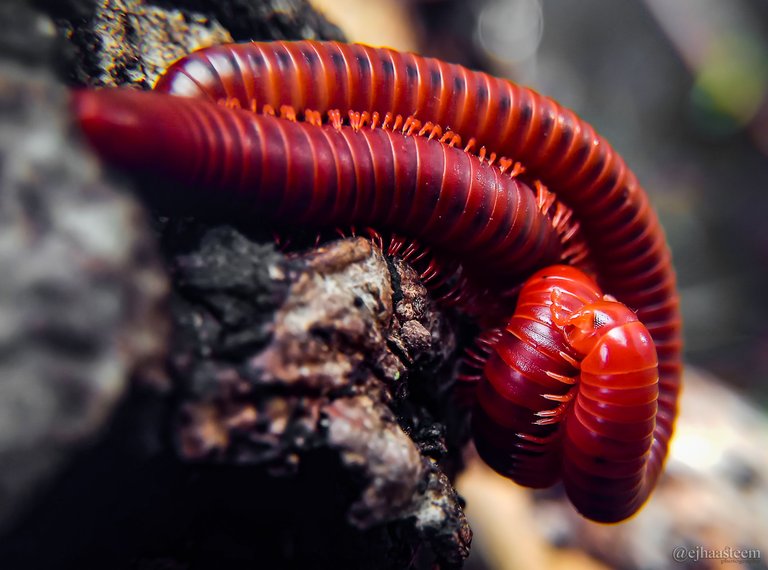
The average millipede has between 80 and 400 legs, not a thousand as the name suggests, one family with centipedes. Millipede can reach 40cm long, and some species have poisonous bites.
The millipede is found all over the world but is more common in the southern hemisphere where the millipede has been known to get to nearly 40cm long. Some species of millipede have a poisonous bite which they use to kill their prey before eating it. Read more :a-z-animals
Distinction from centipedes.
|
|---|
Millipede and centipede differences.
| Trait | Millipedes | Centipedes |
|---|---|---|
| Legs | Two pairs on most body segments; attached to underside of body | One pair per body segment; attached to sides of body; last pair extends backwards |
| Locomotion | Generally adapted for burrowing or inhabiting small crevices; slow-moving | Generally adapted for running, except for the burrowing soil centipedes |
| Feeding | Primarily detritivores, some herbivores, few carnivores; no venom | Primarily carnivores with claws modified into venomous fangs |
| Spiracles | On underside of body | On the sides or top of body |
| Reproductive openings | Third body segment | Last body segment |
| Reproductive behaviour | Male generally inserts spermatophore into female with gonopods | Male produces spermatophore that is usually picked up by female |
Reproduction and growth.
In all except the bristle millipedes, copulation occurs with the two individuals facing one another.
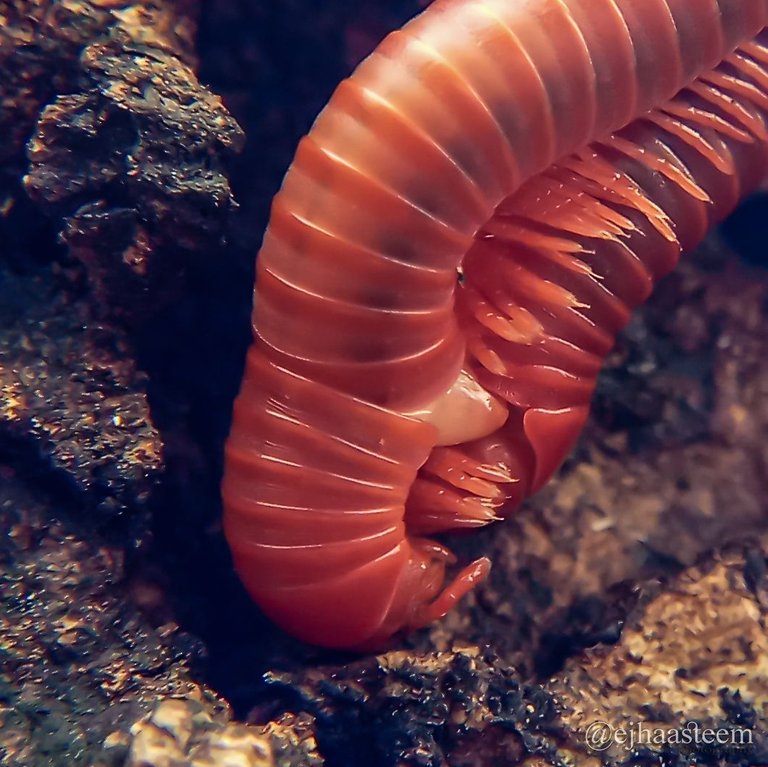
Millipedes show a diversity of mating styles and structures. In the basal order Polyxenida (bristle millipedes), mating is indirect: males deposit spermatophores onto webs they secrete with special glands, and the spermatophores are subsequently picked up by females. Read more : Wikidia
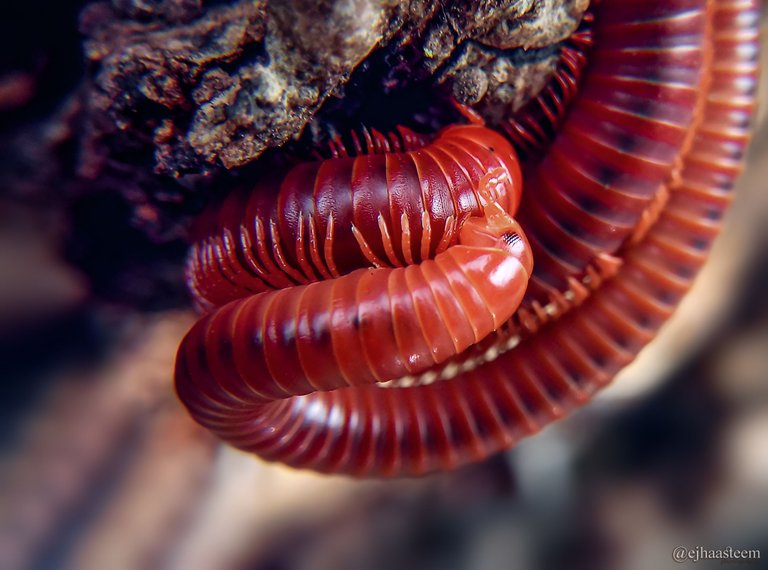
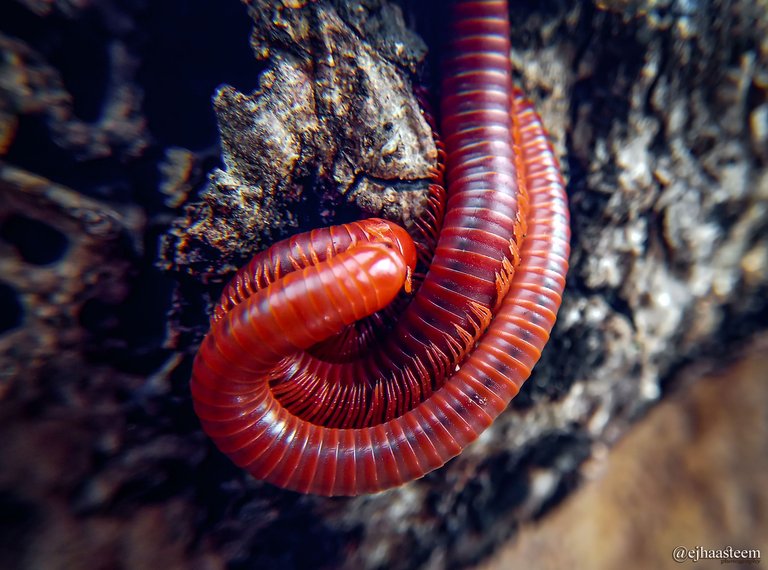
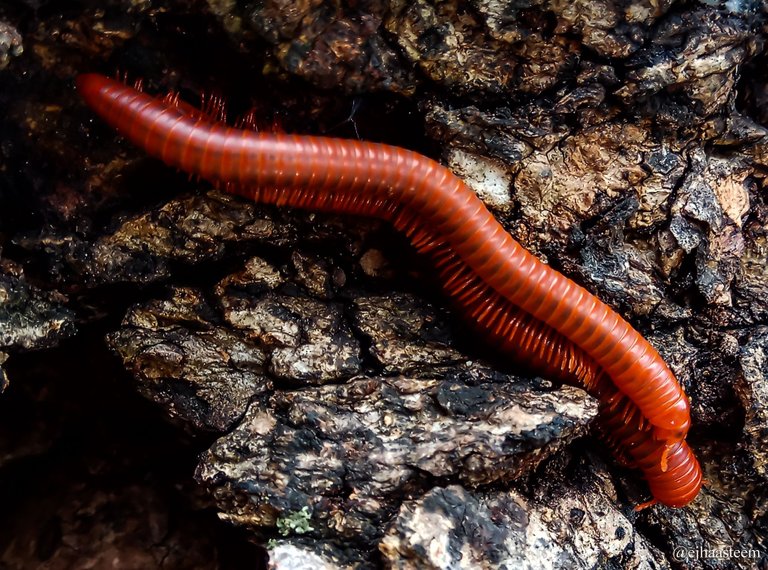
All image taken by smartphone camera, Xiaomi Redmi Note4, with additional macro lenses.
Sources of reading and quotes:
- https://www.orkin.com/other/centipedes/what-is-the-difference-between-centipedes-millipedes/
- https://a-z-animals.com/animals/millipede/
- https://en.wikipedia.org/wiki/Millipede
- https://en.wikipedia.org/wiki/Millipede#Distinction_from_centipedes
- https://en.wikipedia.org/wiki/Millipede#Reproduction_and_growth
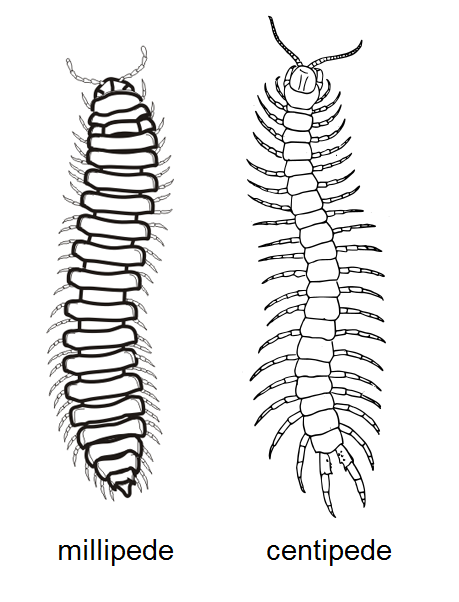

Hello!
This post has been manually curated, resteemed
and gifted with some virtually delicious cake
from the @helpiecake curation team!
Much love to you from all of us at @helpie!
Keep up the great work!
Manually curated by @vibesforlife.
@vibesoflife, you just curated a post that was posted two years ago here https://steemit.com/science/@ejhaasteem/millipede-20171018t211914950z, deleted and reposted today again.
Oh gosh sorry I did not know that, let me get the vote removed
Please do as this kind of behaviour is unacceptable.
Thanks for letting us know!
You're welcome.
It has been removed, thanks
helpiecake + helpie votes removed.